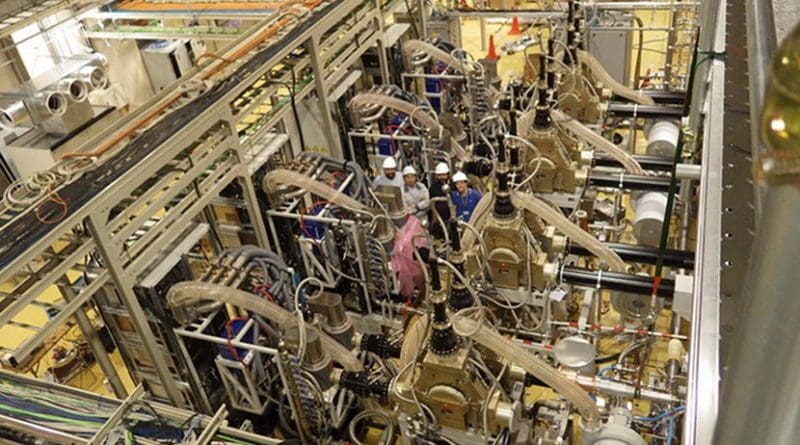Indra Developing One Of World’s Most Advanced Particle Accelerators In Japan
The Spanish consulting and technology firms Indra has completed the design, manufacturing and integration of critical elements of the radiofrequency system for the LIPAC prototype particle accelerator.
Located in the north of Japan, the accelerator is one of the most advanced anywhere in the world, according to Indra. Indra’s involvement, which includes providing technical assistance to support integration of the supplied systems, is framed under the international IFMIF-EVEDA project, a joint initiative between Japan and the European Union.
The initiative will mark a major scientific milestone on the roadmap toward construction of a large reactor capable of generating vast amounts of clean energy in a consistent and commercially viable manner, and one that can be replicated at different sites around the globe.
The ITER project is set to be the seed from which the ambitious IFMIF (International Fusion Materials Irradiation Facility) initiative will grow. The IFMIF program is subdivided into several pioneering projects. Among these, the IFMIF-EVEDA project focuses on verifying the facility’s principle technical aspects (via the construction of prototypes) and the development of detail engineering.
Indra technology, and the reliability of its solutions, have been a driving force behind the IFMIF-EVEDA project since 2008 in a number of areas: developing detailed design, manufacturing and incorporating eight radiofrequency modules to inject power into several of the accelerator’s cavities; specifying and supplying materials to connect the radiofrequency modules with the cavities; as well as other systems to ensure the correct functioning of subsystems and providing technical assistance and integration expertise.
The final stage of the IFMIF-EVEDA project is underway at the Rokkasho facilities, in the north of Japan, where the prototype is located. Indra staff are overseeing initiation of the advanced radiofrequency systems that have been deployed. The project is especially ground-breaking, as there are no other facilities currently working on irradiation tests capable of reliably simulating conditions inside a fusion reactor. Which is why the project represents a major step forward toward development of magnetic confinement fusion. Spain has already stated its interest in hosting the future accelerator, which will be built in the following stage of the IFMIF-DONES program.
The scientific community has great hopes for fusion as an inexhaustible source of energy with barely any environmental impact. It represents one of the major energy challenges for the coming decades. Thus, together with ITER, the IFMIF program could be key to proving that massive energy generation via nuclear fusion is not only possible, but commercially viable.

